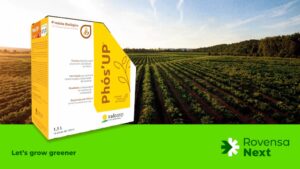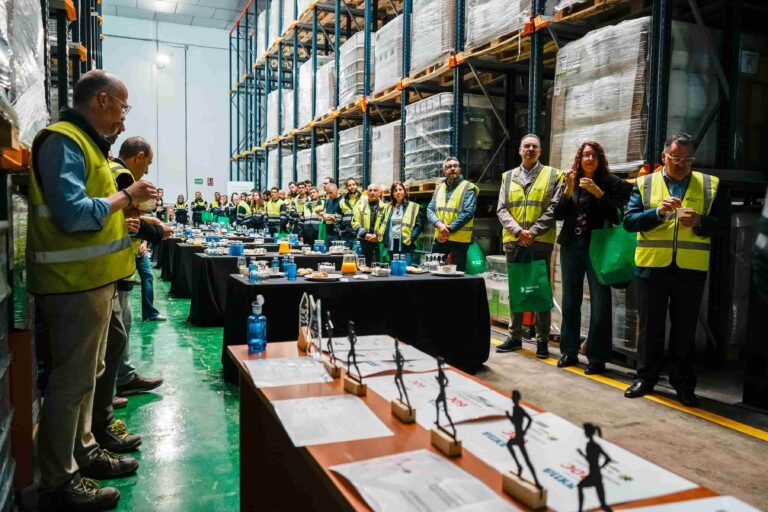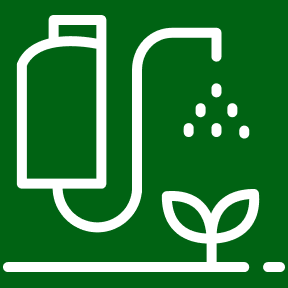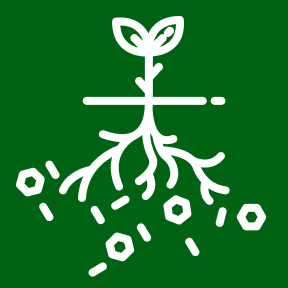In recent years, it is estimated that the increase in the use of mineral fertilisers has grown exponentially, for example, urea application by around 40%, due to the increase in agricultural practices. However, the overuse of fertilisers has often caused damage to the environment.
If applied in excess, they can alter the soil characteristics such as an increase in salt concentration, modifications of soil pH affecting plant development, and even a nutritional and microbiological imbalance in the soil; or increment the appearance of insects, diseases and weeds infestation while increasing plant susceptibility to those pest attacks. Additionally, the remaining fertilisers that are not used by crops, can be washed out of the soil, and run off into the natural environment, polluting water bodies like streams and aquifers. Furthermore, the percolation and leaching of nutrients in the soil reaching fresh water can also lead to a process of eutrophication, where proliferation of phytoplankton and algal species occurs due to the increased availability of nutrients. Moreover, the application of fertilisers beyond its optimal level of usage can also lead to an increase in the emission of greenhouse gases (GHGs) like nitrous oxide (N2O), contributing to global warming and fuelling climate change events.
Recent studies estimate that only less than half of the reactive nitrogen added globally onto cropland is converted into harvested products – hence, used by plants. To decrease the impact to climate change and environmental degradation, several action plans have been proposed by climate experts, activists, and policymakers. One of those is the European Green Deal, which aims to make Europe the first climate-neutral continent by 2050. Among the different aspects of European economy that have to be remodelled to accomplish this milestone, agricultural practices and the entire food production cycle fall within the “Farm-to-Fork” (F2F) strategy. These major changes include the reduction in fertiliser use (by up to a 20%) and reduction in nutrient losses (up to 50%) in agriculture by year 2030. Committed with environmentally good practices, Rovensa Next is in the forefront of cutting-edge technologies like the use of microorganisms as a tool for a better Nutrient Use Efficiency (NUE) and plant nutrition management.
The use and optimization of mineral sources associated with the use of biostimulants and/or inoculants has become a relevant and sustainable practice for the environment and the productive sector. These practices can often improve the use of applied nutrients or even confined in the soil by plants, allowing a more rational and efficient use of agricultural inputs.
Phosphorus is a very dynamic element in soils because when soluble phosphate fertilisers are applied, the phosphate ions are initially released into the soil solution and remain in equilibrium with the labile fraction, that is, the fraction available for plants to use. However, these same ions that form the labile fraction can be converted into non-labile, insoluble phosphates, due to adsorption to iron oxides, aluminium, calcium carbonates or clay colloids in the soil.

Nitrogen is one of the essential macro elements required in large quantities by plants. However, several sources of nitrogen fertilisers have high acquisition costs and even low efficiency due to the mineralization process that these fertilisers undergo so that the plant can take advantage of it. In some countries, inoculation or co-inoculation practices make agricultural production viable. Using as an example the production of soybeans, today in Brazil is financially viable due to the practice of using inoculants based on Bradyrhizobium, as this microorganism has the ability to carry out symbiosis with the plant and convert atmospheric nitrogen and organic matter into stable nitrogen available for plants, replacing a large part or even the total need for mineral fertiliser input.
For grass and cereal crops such as corn, wheat, oats, and others, inoculants based on Azospirillum brasilense also enable the conversion of atmospheric nitrogen into stable nitrogen available by plants. Still, for these microorganisms the replacement or supply of a source mineral nitrogen should not exceed 50%. Thus, it can also be used in leguminous cultures as co-inoculation, that is, with a combined strategy of using together fertilisation with the inoculant-based product.
Both technologies are available at Rovensa Next, contributing to the market demands and represent the commitment of the Company to bring sustainable solutions, such as: for inoculants based on Bradyrhizobium, there is Atmo; and for inoculants based on Azospirillum brasilense, there is Azzofix. Both products present high technology and exclusive formulation that bring a great differentiation in the inoculant and microbial fertiliser market.
At Rovensa Next, we are experts in biosolutions, and we support farmers with our dedication to agriculture through the entire plant lifecycle – from root to shoot, and from seed to shelf – with a holistic portfolio of high performance biosolutions complementing conventional agriculture products.
References:
European Parliament Public Hearing on “Reducing impacts of fertilisers from production to end-use – increasing circularity in agriculture. (2022) “Mineral fertilizers – essential and part of the solution”. Accessed through: https://www.europarl.europa.eu
Innes R., (2013). “Overfertilisation – an overview”, Encyclopedia of Energy, Natural Resource, and Environmental Economics, vol. 2, pp. 50-57. doi: 10.1016/B978-0-12-375067-9.00118-2
Lassaletta, L., Billen, G., Grizzetti, B., Anglade, J., and Garnier, J. (2014). “50 year trends in nitrogen use efficiency of world cropping systems: the relationship between yield and nitrogen input to cropland”, Environ. Res. Lett., 9(10): 105011. doi: 10.1088/1748-9326/9/10/105011
Ritchie H. (2021). “Excess fertilizer use: Which countries cause environmental damage by overapplying fertilizers?”. Accessed through: https://ourworldindata.org/excess-fertilizer
Sedlacek C., Giguere A. and Pjevac P (2020). “Is Too Much Fertilizer a Problem?”, Front. Young Minds, 8:63. doi: 10.3389/frym.2020.00063
















